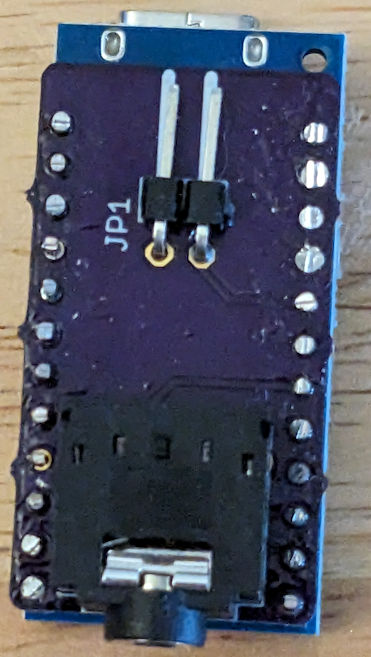Do you like Morse Code? No? Okay, well, I’m going to tell you about this anyway. In my renewed effort to stay on top of my health and welfare, one of my post-COVID realizations is that in addition to physical activity, I need to stop ignoring mental and emotional aspects of this as well. As Dave Scott said in preparation for the Apollo 15 mission, “I believe there’s something to be said for exploring beautiful places. It’s good for the spirit.” Okay, so that was likely only a dramatization portrayed in “From the Earth to the Moon”, but it’s applicable here.
I have been putting together a very portable ham radio station that can be used for Parks on the Air and Summits on the Air (POTA and SOTA for short). It’s not fully together but my first “complete” HF radio station will consist of:
- A QMX Transceiver, which is currently in the wind, I think, or it’s still on backorder. https://qrp-labs.com/qmx.html
- A Talentcell Power Pack, likely much bigger than I really need. https://www.amazon.com/dp/B07SWBS55F
- A Homebrew End Fed Half Wave antenna, using 15-25ft-ish of RG316 feedline with Mix 31 ferrite bead sleeves, a 49:1 unum, silicon jacketed AWG26
- A yet-to-be-determined Morse code paddle, I’m researching better options than the magnetic Amazon special I currently have.
This all has a common theme: It involves needing to communicate using Morse Code. I am not proficient in communicating in Morse Code. I say that, but I have Element 1 exam credit from 2002 saying otherwise, but to quote Captain Bart Mancuso in “The Hunt for Red October”, “That’s all right, Mr Ryan. My Morse is so rusty, I could be sending him dimensions on [insert crude adult reference here that rhymes with ‘say late of the noneth’].” Sorry, that’s about as nonfamily-friendly as you can expect out of this blog.
I originally learned, and struggled, using the Koch method. While this was okay, it’s sort of a boring approach and doesn’t pace with how I learn other things. Understandably, to reach my goal I was dreading having to rehash this. Luckily, I stumbled on a neat site, VBand by Ham Radio Solutions. This site has all of the themes of a typical “Website chat room” tutorial that you’d find when learning something like NodeJS, but with a very unique niche: You communicate with people in the room using Morse Code. If you don’t have an interface, bare minimum, you can type out your “dits and dahs” with your left CTRL and right CTRL keys. This works, even if it’s not the most effective method for doing iambic morse code keying. Since I learn a lot of language by way of being “conversational”, this was going to be the method for me and I needed an actual interface for a practice key to be successful! Ham Radio Solutions sells VBand capable dongles for $25 USD, and that is a perfectly reasonable price that I couldn’t typically build one for, and before I forget, their CW Hotline product is also a fantastic VBand-capable interface.
With that in mind, I also ran across a DIY solution that uses an Arduino Pro Micro and a 3.5mm TRS jack, and that’s about it: OZ1JHM – hamradio solutions vband interface
This was pretty cool. I made one with stuff that I threw together out of my parts box (including a stack of Arduino Pro Micros that I’ve been sitting on for a while). Upon uploading the sketch as is to the Pro Micro, I noticed immediately that the TX light was stuck on. Looking through the code, I found the culprit: Whether there is activity or not being sent from the key, it is always sending at least a Keyboard.releaseAll() command. This had two unintended consequences for me, one being the bright spot in my eye from the overexposure to an LED light in full drive, and the second being that I could not replace the code on the Arduino without pushing it into bootloader mode, but admittedly that may be because I am using a knock-off Pro Micro version. I decided to overhaul the sketch a bit to track the global previous states of the dit and dah pins and use that to drive the logic for the CTRL key presses and releases. It seems to work just fine now.
In my true ability to go overboard, I have added the project code to Github, including a set of Gerber files, should you choose to manufacture a set for yourself (but please, again, bear in mind, this won’t be cheaper than buying the solution from HRS when it’s all said and done I don’t believe). If I still have not dissuaded you, please find that repository here: https://github.com/baconfatlabs/vband-dongle
And, should you want to, I’ve also shared my project on OSHPark for a set of prototype boards: https://oshpark.com/shared_projects/oxoF7UW8







More importantly, though, it works when you hook it up…..


Happy Hacking!
